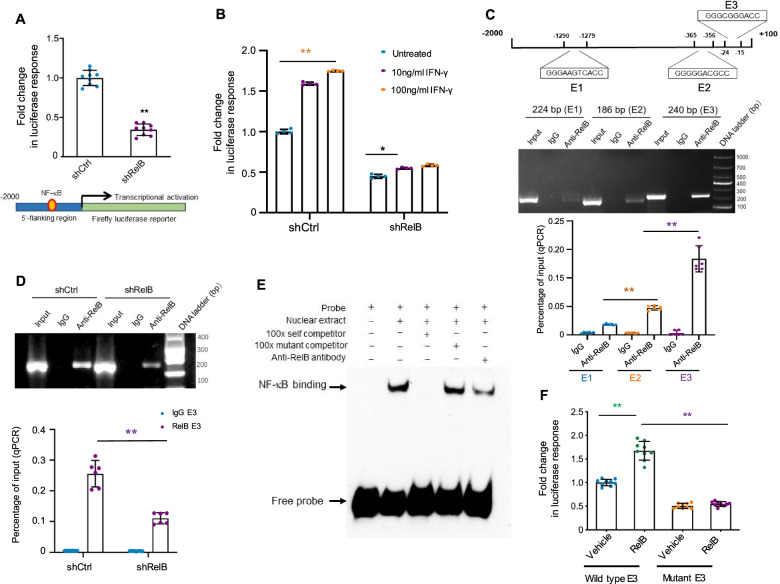Fig. 3.
RelB regulates PD-L1 in PC-3 cells. a A 2000-bp flanking region of the human CD274 gene containing putative NF-κB elements and a core promoter was cloned to drive the luciferase reporter gene, as indicated in the lower panel. The reporter construct was transfected into PC-3 cells with different levels of RelB and the transcriptional activity was estimated by β-gal-normalized reporter responses. b After cell transfection, the cells were treated with IFN-γ as indicated. Τhe IFN-γ-mediated transcriptional induction was analysed by the reporter assay. c Chromatin was precipitated using a RelB antibody, and DNA fragments containing three putative RelB elements (E1, E2, E3) were quantified by regular PCR (upper panel) and quantitative PCR (lower panel). Chromatins without the IP procedure were amplified as input controls. IgG was used as a negative antibody control. d Chromatins derived from RelB-silenced cells were pulled down and the reduction in the E3 fragment was quantified. e A 24-bp double-stranded DNA fragment containing the E3 element was synthesized for the preparation of an EMSA probe with biotin-labelling. Nuclear extract was incubated with the probe and the specific NF-κB binding was determined by EMSA with a self competitor. Additionally, the NF-κB element in the E3 fragment was mutated as a mutant competitor (shown in Fig. S3a). Furthermore, the RelB antibody was used to specifically reduce the E3 binding activity. f The mutated E3 binding site was further cloned and its effect on RelB-mediated transcriptional activation was assessed by the reporter assay. *(p < 0.05) and **(p < 0.01) show significance between the two groups as indicated

